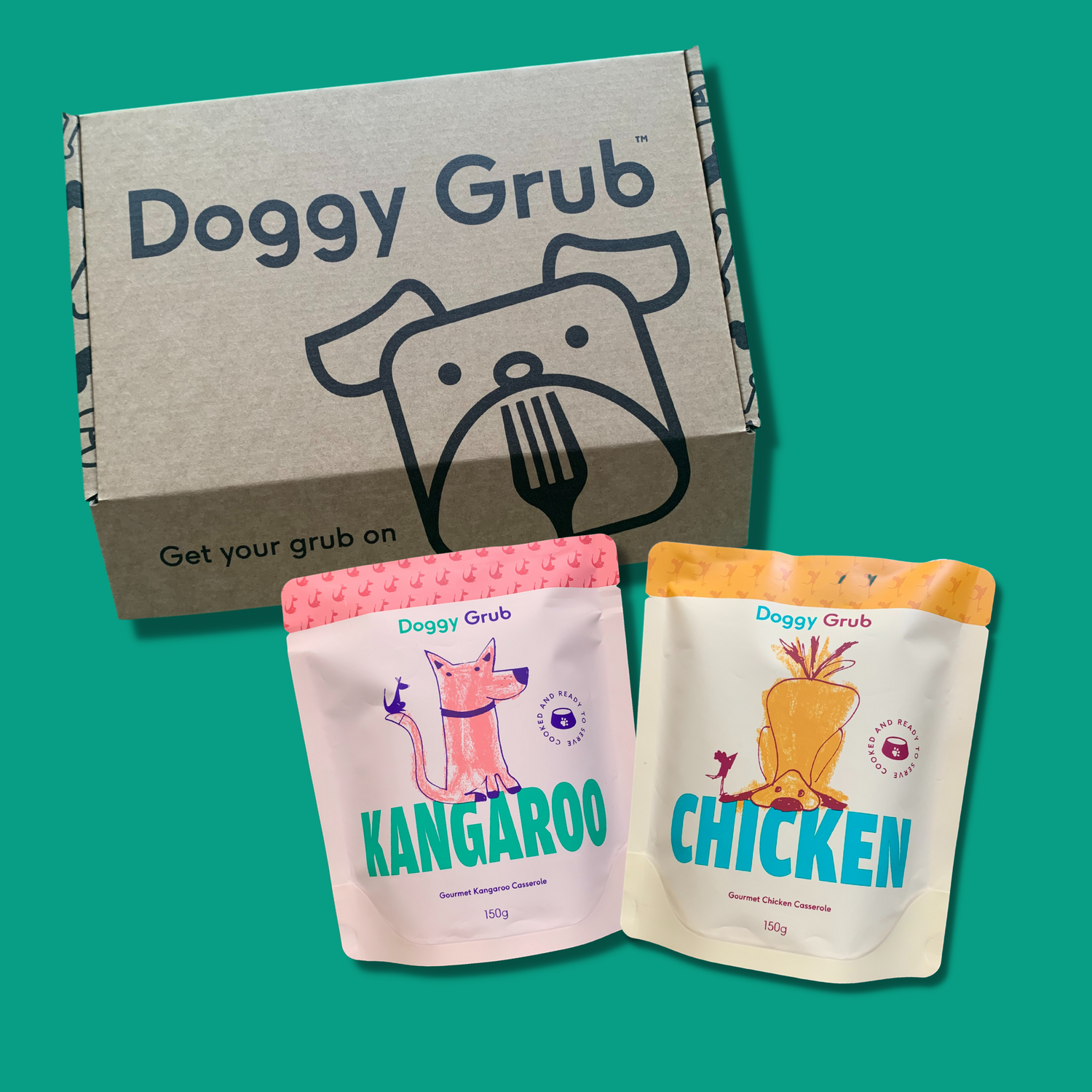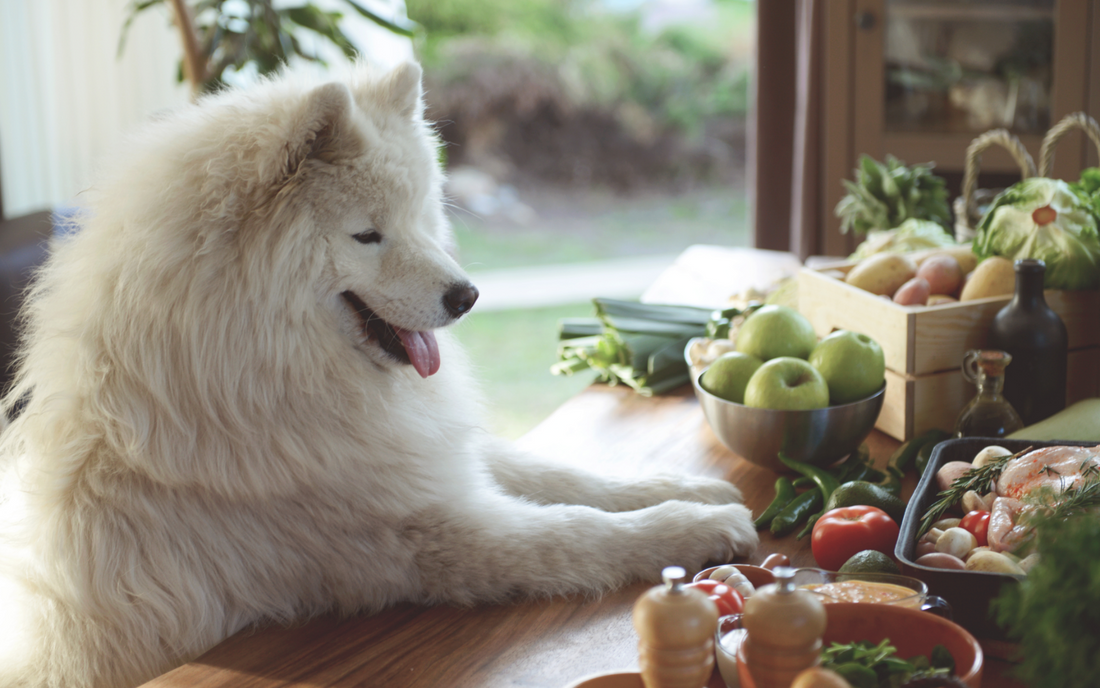After the many recalls commercial dog food has encountered, more and more concerned pet owners are turning to cooking for their own dogs. But the home cooked diets are riddled with myths and misconceptions, making it a difficult topic to navigate.
Is it safe to feed my dog home-cooked food? How can I make sure it is balanced? How can I find the time in my already busy schedule?
Is it safe to cook for your dog?
Many veterinarians, while admitting the poor quality of some pet food, remain shy of recommending a home-cooked diet. This is due to a fear of nutritional imbalance and vitamin/mineral deficiency that could pose a threat to your pet’s health.
However, while vets have your dog’s best interest at heart and are highly skilled pet surgeons, they receive very little training in pet nutrition. The recommendations they do receive are largely provided or sponsored by pet food companies (hence why you find certain brands only at your vet’s practice).
When it comes to feeding advice, it is best to consult an experienced vet nutritionist, the same way you would go and see a nutritionist rather than your GP if you wanted to improve your diet.
If you are ensure of what to cook, an experienced nutrition consultant can help you formulate and adjust a diet according to your dog’s needs. Many also offer DIY recipes that you can try your hand at first.
To supplement or not to supplement?
The biggest challenge when it comes to home cooking for your dog is to make it balanced enough to not miss out on the vitamins and minerals vital for their survival.
Let’s be honest, that can be hard to do.
Using an all-purpose multi vitamin supplement will not do the trick here.
Dogs require high levels of calcium that cannot simply be matched with a dollop of yoghurt. Unless you give bones (which we know can be a choking hazard), you will likely need to use a calcium supplement.
Once you get to know your dog’s nutritional needs, you can work out what their diet already provides and what is missing. Remember, a fresh diet will provide a lot more micronutrients that commercial pet food. Because the later uses poor quality ingredients and cooks at high temperature, they depend on supplements to provide your pet with the required nutrition.
At Doggy grub, we believe natural, real foods are always a better source of nutrition than supplements and we would always recommend a natural supplementation over a synthetic one.
For example, for calcium, choosing eggshell powder over a synthetic form of calcium. Nature has many forms of natural supplementation in its superfoods that are sufficient to maintain healthy living for our pets.
NOTE: There are some situations where it is important to meet all the nutritional requirements, such as growing puppies or pregnant or nursing dogs. In this case, it is best to use home cooked food as a complement to conventional food, unless you have spoken to a pet nutritionist.

Finding the time to cook for my pet.
Feeding your dog a balanced and nutritious homemade diet takes time and requires extensive research, reading widely and speaking with pet nutritionists and/or holistic vets.
Life gets in the way of the best intentions. We get it!
Know that introducing even the minimum amount of fresh food into your dog’s diet will improve their health. So don’t be too hard on yourself!
First, choose what works best for you. If you are already meal planning for yourself, you can pick that day to cook for your dog too.
Once a month, you can cook a big batch and freeze portions for future use.
Make it work around your schedule!
Start with an easy recipe, that you feel happy and confident doing. Once you have made it often enough, you can start substituting some of the ingredients with similar ones, to add variety: for example, cook buckwheat instead of rice and change up your protein source.
No matter what, keep some kibbles for occasional backup.
If all fails, we’re here to help! Our meals are cooked with fresh ingredients and meet AAFCO standards. Each portion is based on your dog’s age, weight, and activity level. You can use Doggy grub to top up your meals, mix it with dry biscuits or as a full diet.
How do I transition my dog to a home cooked diet?
Baby steps! This is the key to switching your dog’s diet from kibbles or canned food, to a home cooked diet.
Start with topping their current meals with a new ingredient such a boiled chicken. You can then continue adding a spoonful of rice, or pureed veggies. If your dog is enjoying it, try your hand at a balanced recipe and continue introducing it slowly to your dog’s bowl, 1/4 at a time, spanning over a few days to a week.
Each dog is different. Some might take longer to adapt than others, and a change in your dog’s stools is to be expected. Do not worry, before long, your dog’s tummy will settle, and they will be thriving on their new fresh food!
Want to be the first to get your paws onto the hottest topics? Subscribe to our newsletter!
-------------------------------------------------------------------------------------------------
The Doggy Grub blog is dedicated to helping dogs and their owners achieve happier, healthier lives, changing the way we feed our dogs one bowl at a time! If you would like to know more about our fresh food head to Doggy Grub










